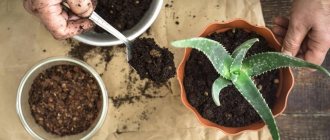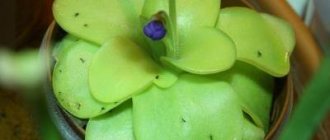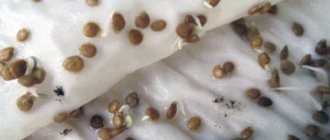It is enough to have just one Uzumbara violet on the windowsill to become an ardent fan of this beautiful plant. At the same time, interest very quickly appears in all the specimens growing among friends and relatives.
Collecting violets is a popular and exciting activity. Every year, many new varieties and hybrids of this plant appear in stores, striking even sophisticated flower growers with their unearthly beauty. But to replenish your collection with a new variety, it is not necessary to buy a new adult violet. You can ask your friends to share a flower.
This plant is easily propagated by dividing the bushes. But if you need a large number of rosettes, then it will not be superfluous to know how to grow flowers from a leaf in order to share the beauty with other lovers.
Young violets can be obtained quite easily from one leaf blade. But there are small subtleties that need to be taken into account in order to avoid annoying mistakes.
Violet
Indoor violets are rooted with different fragments of the plant, but only leaf propagation produces several young shoots at once. To do this, take a container with holes in the bottom and a drainage layer consisting of expanded clay, pebbles or other available material.
Then it is filled with ready-made soil purchased in the store, or a substrate is made up of equal parts:
- turf soil;
- leaf humus;
- high peat;
- gravel.
The soil mixture is slightly moistened and a violet leaf cut from the middle tier of the rosette is placed on it. Too young leaf plates from the top or lower (old) ones are not suitable for rooting.
The planting material is cut across the veins in several places with a sharp (disinfected) blade and carefully pressed against the ground. You can even pin it with a toothpick so that the contact area is larger.
The container is covered with polyethylene (glass) and placed in a warm place, providing sufficient lighting.
After 1-2 weeks, tiny rosettes will appear at the incision sites. Periodically, the mini-greenhouse is opened so that the plant can breathe and condensation does not accumulate.
Sansevieria
Deservedly included in the list of the easiest crops to propagate, Sansevieria , with its tough leaves decorated with variegated ripple patterns, does not take root very quickly, but is almost guaranteed. Both plants with flower-shaped rosettes, and the more popular cylindrical sansevieria, and “pikes” root in the same way - with parts of the leaves.
Large whole leaves are cut transversely into “columns” from 5 to 12 cm long. To preserve the variegated colors of the variety, all the “green” parts of the leaf are cut out; for simple plants such tricks are not necessary. The sections must be dried. Sections of Sansevieria leaves can be rooted in water, but a more reliable method is in soil or sand, immersing the leaf about a third of the height, vertically or at a slight angle, observing the direction of growth. Rooting in Sansevieria takes only a few weeks, but the formation of daughter plants ready for separation will have to wait up to 4 months.
Begonia
Any variety of begonia can be easily rooted using a cut leaf with a cutting - it can be placed in soft, clean water or directly planted in the soil.
In order to obtain several shoots at once, the leaf plate, as in the case of violets, is laid on moist soil and transverse cuts are made.
Begonia prefers light, nutritious soil with good permeability to moisture, air and a slightly acidic reaction (pH - 5.5-6.5 units).
If you do not have the opportunity to buy ready-made soil, you can make it yourself. To do this take:
- 2 parts leaf turf;
- 2 hours of high-moor peat;
- 1 tsp coarse river sand;
- 1 teaspoon of matured compost or humus.
The soil is slightly moistened and maintained in this condition until roots 2-2.5 cm in size appear on the planting material.
Reproduction by whole leaf with petiole
This method is typical for Saintpaulias, gloxinias, small-leaved peperomia and some types of begonias.
To do this, take an adult healthy leaf, cut at the base of the plant. The length of the petiole you leave will depend on what you are rooting it in. So, when rooting Saintpaulia in water, a petiole of about 3-4 cm is left at the leaf. And when rooting in the ground - no more than 1 cm. The tip of the petiole is cut strictly across with a sharp knife, dipped in a phytohormone solution (see phytohormones). The petiole is placed in a depression previously made in the soil, so that the underside of the leaf faces the wall of the pot. The leaf itself should not touch the soil, but rise above it. Then the pot is covered with a jar to increase air humidity and be sure to ventilate twice a day.
In general, you can root a leaf with a petiole both in water, which is done more often, and in the ground. If you put a leaf in a glass of water, you can always take it out and see if the roots have appeared or not. If the leaf petiole does not want to produce roots, you can put it in a solution of the Ukorenit preparation - see phytohormones.
When a leaf with a petiole takes root in the ground (this can be a mixture of peat and sand in equal parts, or pure sand, or vermiculite), then you can find out whether roots have appeared only after some time has passed: if you remove the jar during the day and the next day the leaf does not wither - most likely it has taken root. The fact is that in a dry room, if there are no feeding roots, then the leaf evaporating moisture will not be able to replenish it in any way, and will begin to wither. After the leaf with the petiole takes root, it will begin to intensively grow the root mass, and only when it is sufficient will the growth of the above-ground part begin. Therefore, sometimes flower growers ask the question: “the leaf stands in the ground, does not wither or grow, what’s wrong with it?” So, if the leaf is not under a bag or jar, then shoot growth is not visible while the root system is growing. The rate of root growth depends on many factors, primarily temperature, light and uniformity of moisture. It must be warm, but not hot, optimally 24-26°C, not higher than 32°C, and light, but do not place the pot in direct sun, otherwise the temperature under the jar or bag will rise greatly and slow down the development of the plant. The light should be bright and diffused. If necessary, you can add additional lighting with fluorescent lamps so that the daylight hours are 12-14 hours.
Crassula
Like all succulents, the crassula, or money tree, takes root easily with the help of any fragment separated from a mature plant. It is enough for a fleshy leaf cut from the crown to touch the moist soil.
In order to root a Crassula leaf, you don’t have to put in much effort. A plant completely covered with aerial roots has high viability.
You can buy a substrate for a succulent at a flower shop or prepare it yourself from equal parts:
- turf land;
- humus;
- vermiculite;
- gravel.
A prerequisite is that the soil must be well drained, because... Money tree does not tolerate excessive moisture.
Reproduction by part of a leaf
This is the common propagation method for Mason begonia, royal begonia, sansevieria, streptocarpus, aloe and other plants, mainly succulents. Sansevieria leaves are cut into pieces up to 5 cm long; in begonia, part of the leaf with a base is up to 4 cm, and planted in moist, warm sand or a very loose substrate made from a mixture of leaf soil and peat.
To prevent the leaf from falling flat on the soil, a supporting stick is placed under it. At high temperatures (30-32°C), careful watering, and good lighting, pieces of leaves take root and form a young plant. When propagating by part of a leaf, higher soil and air temperatures are allowed, because the evaporating surface of the plant is much smaller.
What’s noteworthy is that when dividing a leaf into parts and planting, it doesn’t matter which side a fragment of a leaf is placed in the ground - where the bottom or top was, it doesn’t matter, even if you plant a piece of leaf “upside down”, it will still give roots. The success of rooting cannot be called one hundred percent; often only half or a third of the planted fragments of leaves take root. Some rot, others dry out. Based on my own observations of the rooting of fragments of Sansevieria leaves, I can note that pieces of leaves planted in pure vermiculite took root better. The only explanation I find is that vermiculite does not have organic elements, i.e. does not rot, absorbs water well and releases it when necessary. No special care is required, just occasionally spray the leaves and substrate. But later, when young leaves grow, replanting into the ground is necessary, and here there is a danger of losing the plants. The roots formed by cuttings in water and vermiculite have many fluffy root hairs, they are also called water roots. When planted in the ground, they quickly dry out, and the plant’s growth is severely retarded and sometimes dies. Therefore, when planting in a pot, you need to make a hole in the ground and plant a leaf with roots there along with a piece of vermiculite (without shaking the roots). After transplantation, shade from the sun for the first days.
Ficus
Even a novice gardener can cope with the propagation of ficus. The leaf plate is separated from the crown with a sharp, disinfected knife.
During this process, a thick, sticky juice begins to secrete at the cut site, which should be washed with warm water. The sheet plate is left to dry for a couple of hours.
Then several shallow longitudinal cuts are made at the base of the cutting, this stimulates the growth of young roots. The prepared sheet is placed in a jar of clean water at room temperature.
In order to speed up the process of root formation, cover the container with a plastic bag. The mini-greenhouse is sometimes ventilated.
Streptocarpus
An elegant competitor to Saintpaulias and one of the most beautiful plants of the Gesneriaceae family, Streptocarpus captivates with the beauty of its pubescent, large lanceolate leaves with interesting wrinkles and graceful watercolor flowers rising on thin purple pedicels. It is most often propagated by seeds and division, but young leaves with small cuttings, and even their fragments, take root successfully:
- strips about 5 cm long, cut strictly perpendicular to the midrib (the upper and lower parts must be discarded);
- a leaf cut longitudinally along the central vein.
After drying, the leaves or parts of the leaf are planted vertically, cut down, buried 1/3 in light soil, sprayed with fungicides and placed under a hood. Good lighting and warmth are important for streptocarpus. The leaves take root in 1-1.5 months, young rosettes are planted after the formation of strong roots and growth.
Test on the topic: “Vegetative propagation of plants”
Time limit: 0
Navigation (job numbers only)
0 out of 15 tasks completed
Questions:
- 1
- 2
- 3
- 4
- 5
- 6
- 7
- 8
- 9
- 10
- 11
- 12
- 13
- 14
- 15
Information
The verification test task includes questions with one or more correct answers.
You have already taken the test before. You can't start it again.
The test is loading...
You must log in or register in order to begin the test.
You must complete the following tests to start this one:
results
Correct answers: 0 out of 15
Your time:
Time is over
You scored 0 out of 0 points (0)
| Average result |
| Your result |
Categories
- Botany 0%
maximum of 20 points
| Place | Name | Recorded | Points | Result |
| Table is loading | ||||
| No data | ||||
Your result has been recorded in the leaderboard Loading
- 1
- 2
- 3
- 4
- 5
- 6
- 7
- 8
- 9
- 10
- 11
- 12
- 13
- 14
- 15
- With answer
- With a viewing mark
- Task 1 of 15
1.
Vegetative reproduction occurs through cell division
Right
Wrong
- Task 2 of 15
2.
Tubers are most often propagated
Right
Wrong
- Task 3 of 15
3.
Carnations, pelargonium, coleus, tradescantia, ficus are propagated
Right
Wrong
- Task 4 of 15
4.
Most often they are used by gardeners to create new plants that are resistant to cold and pests with the desired taste qualities.
Right
Wrong
- Task 5 of 15
5.
For budding, they cut from a cultivated plant
Right
Wrong
- Task 6 of 15
6.
Winter and summer shoots are used for propagation
Right
Wrong
- Task 7 of 15
7.
Reproduces by stolons
Right
Wrong
- Task 8 of 15
8.
Begonia and violet can be propagated
Right
Wrong
- Task 9 of 15
9.
Propagated by dividing the bush
Right
Wrong
- Task 10 of 15
10.
Part of the stem with buds used for propagation
Right
Wrong
- Task 11 of 15
11.
As a result of vegetative propagation, young shoots can be obtained from
Right
Wrong
- Task 12 of 15
12.
A method of vegetative propagation that allows flowering to occur even in winter
Right
Wrong
- Task 13 of 15
13.
Propagated by rhizomes
Right
Wrong
- Task 14 of 15
14.
Propagated by bulbs
Right
Wrong
- Task 15 of 15
What plants reproduce using creeping shoots?
Reproduction by creeping shoots
- "Usami" Creeping tenacious Strawberry Cereals - some species Cinquefoil Cranberry Chlorophytum
- Layerings Raspberries Blackberries Gooseberries
- Tubers Potatoes Jerusalem artichoke Dahlia, sweet potato
- Rhizome
- Bulbs of Narcissus Snowdrop
Interesting materials:
Why does the geyser go out during operation? Why am I always cold? Why is it that the hero of our time ends the story with a fatalist? Why is Chinese New Year at different times? Why does my computer turn off during operation? Why does my computer restart while it's running? Why does the computer turn off on its own during operation? Why does the cat twitch its tail all the time? Why does the kitten squeak all the time? Why does perennial seawater ice desalinate over time?











